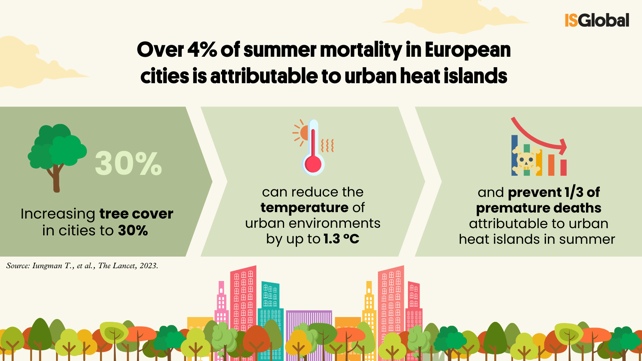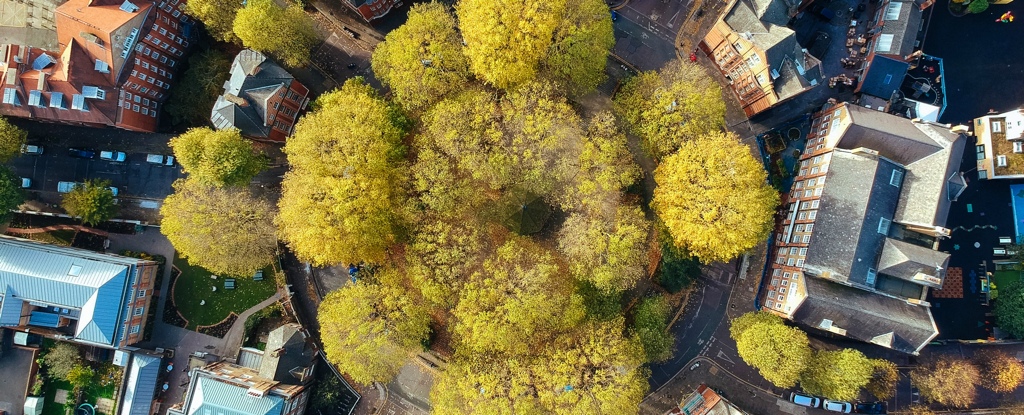Planting more trees in urban areas to reduce summer temperatures could cut deaths directly related to hot weather and heatwaves by a third. said researchers Wednesday.
modeling found that increasing tree cover to 30 percent during hot summer months would save an average of 0.4 degrees Celsius (0.7 degrees Fahrenheit) locally, they say reported The lancet.
Of the 6,700 premature deaths attributed to higher temperatures in 93 European cities in 2015, a third could have been prevented Results.
Currently, on average, almost 15 percent of urban environments in Europe are covered with some kind of foliage.
The study is the first to extrapolate the number of premature deaths due to higher temperatures in cities, which additional tree cover could prevent, said lead author Tamara Iungman, a researcher at the Barcelona Institute for Global Health (ISGlobal).
“We already know that high temperatures in urban environments are associated with adverse health outcomes such as cardiovascular failure, hospitalizations and premature death,” she said in a statement.
“Our aim is to educate local politicians and decision-makers on the benefits of strategically integrating green infrastructure into urban planning to promote more sustainable, resilient and healthier urban environments.”
Cities experience higher temperatures than surrounding suburbs or rural areas due to what is known as the urban heat island effect.
This extra heat is mainly caused by a lack of vegetation, air conditioning fumes, dark asphalt and building materials that absorb and retain heat.
climate change has already exacerbated the problem. Last year Europe experienced its hottest summer on record and the second warmest year.

Health Benefits
Heatwaves around the world are experiencing record-breaking peaks and have been increasing in duration over the past few decades.
Even today, the cold still kills more people in Europe than the heat. However, climate models predict that within a decade, heat-related illnesses and deaths will place a greater burden on health services.
“This is becoming more urgent as Europe experiences more extreme temperature swings from climate change,” Iungman said.
Researchers estimated death rates for people over 20 years old between June and August 2015, for a total population of 57 million.
This data was analyzed in two modeling scenarios in terms of daily mean temperatures in cities.
The first compared city temperatures with and without urban heat islands. Increased the second simulated tree cover temperature reduction to 30 percent.
On average, it was 1.5 degrees Celsius warmer in cities in summer 2015 than in the surrounding areas. The city with the highest difference – 4.1 degrees Celsius – was Cluj-Napoca, Romania.
Across all cities, 75 percent of the total population lived in areas that were at least one degree warmer, while 20 percent experienced temperatures at least two degrees warmer.
Overall, the cities with the highest temperature-related mortality rates were in southern and eastern Europe.
“This is important research,” commented Laurence Wainwright, Senior Lecturer at Oxford University’s Smith School of Enterprise and the Environment.
“Planting trees in the city — at the right scale, in the right places, and under certain other conditions — is likely to result in modest but real reductions in heat-related deaths in many urban areas.”
Previous studies have shown that Green spaces may have additional health benefits such as reducing cardiovascular disease, dementia and poor mental health, and improving cognitive function in children and the elderly.





